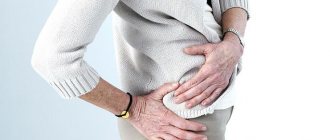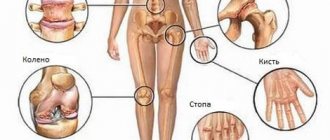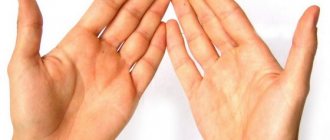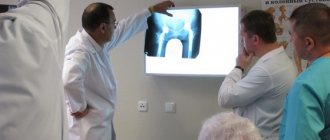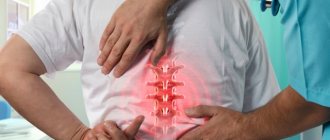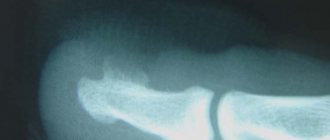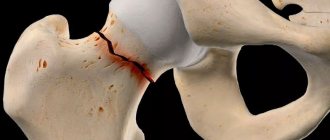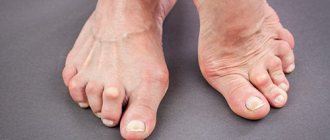Polyarthrosis is a medical term denoting degeneration and dystrophy of articular tissue in two or more bone joints in different parts of the human body. If only one large or small joint is affected, then we are talking about monoarthrosis. It is most often associated with trauma or increased physical stress on the articular endplates.
Polyarthrosis of the joints is a complex form of the disease, the etiology of which may have a negative total effect on the cartilage of the human motor system as a whole. These may be general degenerative processes, impaired blood microcirculation (for example, with diabetic angiopathy), connective tissue diseases, congenital and acquired chondropathy, gross and long-term errors in diet, and the use of certain types of medications.
Deforming polyarthrosis develops very slowly. Sometimes it takes up to 10 years from the primary pathological destruction of cartilage tissue to the formation of bone growths on the heads of bones. This is the main insidiousness of the disease. It is amenable to successful conservative treatment only at the initial stage, when, in principle, at least the remnants of cartilaginous tissue are preserved and there are still no deformations of the bone tissue.
But most often, patients see a doctor only at the third stage of polyarthrosis, when only surgery to replace the damaged joint can help. Therefore, we offer to find out detailed information about the symptoms and treatment of polyarthrosis - it will help you avoid cases when the disease is too advanced for treatment with conservative methods.
If you find primary signs of osteoarthritis in one or more joints, seek medical help immediately. Perhaps right now it is still possible to save the joint and restore its full functionality.
In Moscow, you can make an appointment with an orthopedist at our manual therapy clinic. Here, each patient has the opportunity to receive a completely free individual consultation with an experienced doctor. During the appointment, the doctor will conduct a full examination and make a preliminary diagnosis. Will give individual recommendations for further examination and treatment.
What kind of disease is polyarthrosis?
Let's figure out what kind of disease polyarthrosis is and what types of tissues of the musculoskeletal system it affects. Anatomically, each joint is:
- the heads of tubular bones entering its cavity;
- they are covered with cartilaginous synovial tissue, which has the ability to absorb fluid when straightened and release it when compressed - thus protecting against abrasion and dampening the shock-absorbing load;
- Between the cartilaginous synovial and bone tissue there are end articular plates - they contain a capillary blood network and provide partial nutrition to the bone and cartilage tissue;
- the heads of the bones are covered with an articular capsule made of dense connective tissue, inside it is filled with a sufficient amount of synovial fluid;
- the stability of the position of the bone heads in the articular capsule is ensured by the ligamentous apparatus;
- next to the heads of the bones there are places of attachment of muscle tendons - they provide mobility of the articulation of bones (flexion and extension, rotation, abduction and adduction movements).
The muscle tissue located next to the joint is directly involved both in stabilizing the position of the bone heads and in metabolic processes, including the diffuse nutrition of cartilage tissue. Therefore, the primary etiological factor in the destruction of joints is considered to be a sedentary lifestyle, in which partial degeneration of the muscular frame of the body is observed.
Polyarthrosis of the joints is a degenerative dystrophic disease that affects all structural tissues:
- first, the process of thickening of the synovial fluid in the joint capsule begins - it becomes less than necessary, it loses its physiological properties (this is facilitated by impaired performance of the muscle fiber);
- then the process of dehydration of the cartilage tissue covering the heads of the bones begins - a primary inflammatory process occurs, as a result of which fibrin scars are formed in the articular cavity;
- this disrupts the geometry of the joint and complicates its functioning - the patient begins to feel slight stiffness in movements;
- at the first stage of polyarthrosis, primary degenerative dystrophic changes occur in the cartilaginous shell of the heads of bones - the tissue cracks and does not provide complete shock-absorbing protection;
- when the volume of cartilage tissue and synovial fluid in the joint capsule decreases, the fixation of the bone heads is disrupted - joint instability occurs;
- it leads to the fact that cartilage tissue quickly wears out and collapses;
- cracks and chips appear on the exposed heads of the bones due to friction during movement;
- they are filled with deposits of calcium salts - osteophytes are a sign of the third stage of polyarthrosis.
Gradual development leads to the formation of contractures in parallel with the destruction of the joint. They limit mobility, which again helps to mask the disease. Since the patient does not make physiological movements, he cannot assess the extent of the changes that have occurred. Moreover, it is the restriction of mobility that entails the acceleration of the process of dystrophy and degeneration of articular tissues, since this reduces the intensity of microcirculation of blood and lymphatic fluid at the site of pathological changes.
Drug therapy
Treatment of polyarthritis of the knee joint consists of eliminating the cause, symptoms and further development of the disease. For therapy use:
- NSAIDs (Nimid, Ibuprofen, Meloxicam).
- Glucocorticosteroids (Depo-Medrol, Kenalog).
- Antibiotics (prescribed after determining resistance).
- Drugs whose main purpose is to stimulate the immune system (“Tactivin”).
- Chondroprotectors (“Teraflex”).
- Vitamin and mineral supplements.
- Local preparations (gels, ointments, creams that help alleviate the course of the disease at its peak).
Any medicine for polyarthritis should be used as part of a set of measures aimed at improving the patient’s condition and based on the doctor’s recommendations.
Causes of the disease polyarthrosis
The disease polyarthrosis has a diverse nature of its occurrence. The main causes of polyarthrosis are:
- traumatic effects - bruises of soft tissues, fractures, cracks in the area of the heads of bones, cicatricial deformations of the tendon, ligament and connective tissue surrounding the joint;
- aseptic necrosis of the heads of bones that occurs against the background of ischemia (may be a consequence of various vascular pathologies, such as atherosclerosis, diabetic angiopathy, varicose veins of the lower extremities, obliterating endarteritis, impaired innervation of the vascular wall, etc.);
- inflammatory processes in the joint cavity, including infectious, autoimmune, allergic, hemorrhagic, etc.;
- systemic pathologies of cartilage tissue (chondropathy, dysplasia, systemic lupus erythematosus, psoriasis, etc.);
- endocrine pathologies, including those associated with the increase in excess body weight and disruption of metabolic processes in the human body;
- the use of pharmacological drugs that have a negative effect on the condition of cartilage tissue (such drugs include non-steroidal anti-inflammatory drugs, which are very often prescribed in courses to patients with any type of musculoskeletal disease, thereby accelerating the development of polyarthrosis).
Risk factors often lead to the development of polyarthrosis:
- excess body weight has a negative impact on the condition of the articular end plates - they lose their ability to provide blood supply to cartilage tissue and the process of degeneration begins;
- incorrect placement of the foot entails a change in the position of the heads of the bones in three large joints at once (ankle, knee and hip) - they are destroyed simultaneously and leads to the development of polyarthrosis of one limb;
- insufficient fluid intake during the day leads to dehydration and increased viscosity of synovial fluid;
- heavy physical labor and sports lead to rapid aging of joint tissues;
- Wearing high-heeled shoes is also a risk factor.
Numerous pregnancies, hormonal imbalances, frequent colds and poor lifestyle can affect the development of polyarthrosis. Smoking and drinking alcoholic beverages provoke the destruction of cartilage tissue throughout the body.
Prevention
To avoid the development of polyarthrosis, it is necessary to control physical activity, maintain the correct weight, avoid joint injuries, and if they occur, treat them in time, monitor your posture, stop sitting with your leg crossed over your knee (this posture interferes with proper blood circulation, and this in turn negatively affects condition of intra-articular cartilage), timely treatment of infectious and inflammatory diseases.
It is recommended to include more amino acids in your diet - builders of the body's protein structures (lean meat, poultry, white fish, dairy products, eggs, cereals, legumes, soy, nuts, fruits and vegetables). Gymnastics and walks in the fresh air are encouraged. arthrosis leg diseases joint diseases hand diseases polyarthrosis
Symptoms of polyarthrosis
Clinical symptoms of polyarthrosis depend on the stage of the pathological process. At the initial stage, they manifest themselves only in slight stiffness of movements, but there is no restriction of mobility. Pain can only occur after very significant physical exertion.
With polyarthrosis of the first stage, the patient already begins to feel quite pronounced signs of trouble in two or more joints. They can result in increased fatigue of the surrounding muscles as they are forced to take on excess load while maintaining joint stability. Periodic pain and a slight limitation in the range of motion are also evident.
The second stage of polyarthrosis is characterized by the greatest variety of clinical symptoms:
- pain is present almost constantly with any movement (may be absent at rest);
- movements are limited; when trying to increase the amplitude of mobility, unbearable acute pain occurs;
- weakness is felt in the muscles;
- in the evening, strong clonic and tonic convulsions of the arms, legs, and back occur;
- there is no opportunity to freely perform those movements that were previously available.
When taking an x-ray at the second stage of polyarthrosis, a sharp narrowing of the joint space will be visible, which indicates that the cartilaginous synovial tissue has already been completely destroyed. Immediate treatment must be started.
The third stage of polyarthrosis is different in that the patient may not be able to move the affected joints. The process of formation of persistent contracture and muscle tissue atrophy begins. The joint tissues are completely destroyed. Therefore, pain is present almost constantly. It can no longer be controlled with non-steroidal anti-inflammatory drugs. Only blockades help - injections of corticosteroids directly into the joint cavity.
In the third stage of polyarthrosis, the X-ray image shows complete destruction of the cartilaginous synovial tissue. The heads of the bones are covered with bone growths in the form of osteophytes. The joint loses its mobility. Unfortunately, in such a situation, only endoprosthetic surgery can help.
What is the true danger for a patient with such a diagnosis?
Diagnosed polyarthrosis signals serious disorders occurring in the human body. In most cases, the disease develops in the presence of other pathological conditions, which indicates a not very favorable prognosis, unlike other types of osteochondrosis (elbow, knee or hip joint).
The true danger of lack of control over degenerative-dystrophic processes lies in the limited mobility of the limbs and spine. If left untreated, the joint tissues wear out greatly, which causes intense pain to the person.
A large number of lesions of articular and bone lesions can lead to irreversible consequences and cause a significant deterioration in a person’s quality of life, namely, obtaining the status of “disabled” and the inability to self-care.
Is it possible to cure polyarthrosis?
The answer to the question of whether polyarthrosis can be cured is always positive. Yes, you can completely restore the functionality of the affected joints. But at the first and second stages this can be done using conservative methods of influence. And in the third stage, surgery will be required to replace the affected joints. With the help of endoprosthetics, you can reconstruct the joint and restore its mobility.
Before treating polyarthrosis, it is necessary to establish exactly the degree of damage to cartilage and bone tissue. If the cartilaginous synovial membrane has been preserved, then it is advisable to take measures to restore its integrity and physiological properties. If the cartilage tissue is completely destroyed, then it is necessary to seek surgical help.
Physiotherapy
You can relieve pain and prevent the transition of the disease from acute to chronic with the help of physiotherapeutic procedures. Such procedures improve blood circulation at different stages of the disease, normalize metabolic processes, and stimulate the regeneration of damaged cartilage tissue.
Physiotherapy is highly effective
List of highly effective procedures:
- massage (during remission);
- cryotherapy (cold treatment);
- UHF;
- laser exposure;
- kinesiotherapy (motion therapy);
- ozokerite baths;
- exposure to a static magnetic field;
- paraffin applications;
Physiotherapy is contraindicated during periods of exacerbation of the disease.
Treatment of polyarthrosis of joints
To treat polyarthrosis, pharmacological drugs, physiotherapy, shock wave therapy, physical therapy, manual therapy methods and much more are used. Chondroprotectors are currently popular. But it is important to understand that such drugs, designed to restore the integrity of cartilage tissue, are effective only when administered intra-articularly. The cause of the destruction of cartilage tissue is the disruption of the surrounding muscles. They lose the ability to transport fluid and nutrients into the joint cavity in the form of diffuse exchange. Therefore, the administration of chondroprotectors in the form of intramuscular injections and tablets is not effective. Or it is necessary to combine the use of chondroprotectors and manual therapy methods.
Laser treatment allows you to restore the integrity of cartilage tissue only at an early stage. This effect allows you to eliminate fibrin deposits in the joint and increase the range of mobility.
Manual therapy methods are aimed at fully restoring the physiological structure of the joint. All physiological metabolic processes are restored in it. When treating polyarthrosis of the joints using manual therapy methods, metabolism accelerates, the cartilaginous synovial membranes regain their shape and shock-absorbing ability.
Our clinic uses massage and osteopathy, reflexology and kinesiotherapy, physiotherapy, laser treatment, therapeutic exercises and much more. If you need effective and safe treatment for polyarthrosis of the joints, then make an appointment with us for a free appointment. During the consultation, the doctor will conduct an examination, make an accurate diagnosis, and talk about the possibilities and prospects for treatment at the established stage of joint destruction.
Therapeutic measures
If the diagnosis is polyarthritis of the knee joint, treatment is aimed at stopping the source of inflammation, reducing pain and restoring the functions of the knee joint. The primary task is to eliminate the cause that provoked the development of the disease.
For successful therapy, a comprehensive examination of patients with rheumatoid arthritis is carried out and includes a set of measures:
- Drug treatment.
- Physiotherapeutic therapy.
- Exercise therapy.
- Use of antibacterial drugs.
- Compliance with nutritional rules for ACL.
An important point is a strict diet when treating PA.
Based on the examination results, a course of treatment is prescribed, which is aimed at eliminating symptoms and further development of the disease.

